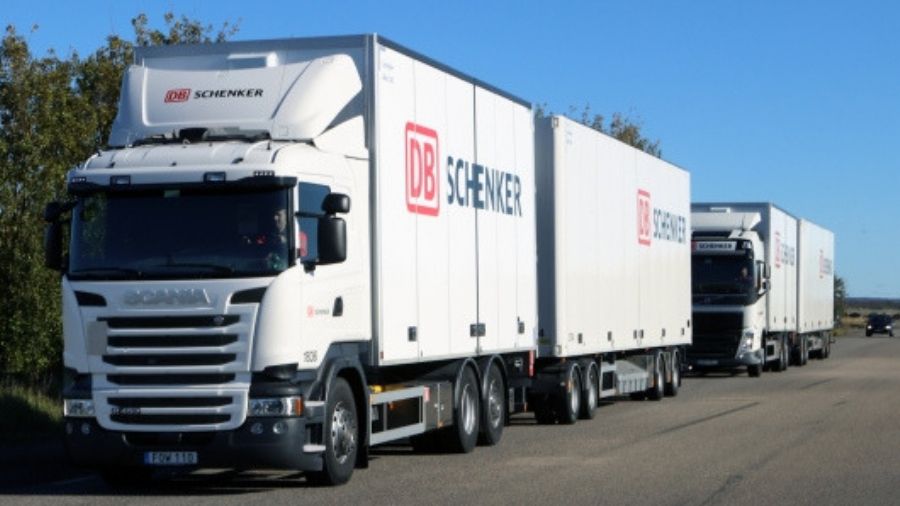5 things about 5G more important than the speed
It’s a digital revolution, not just a speed-boost

5G is here, but if you think it’s all about ultra-quick downloads and web pages that are faster to load, you’re only half-right. New 5G cells will be able to transfer not just more data, more quickly, but they’ll also communicate instantly.
A real-time internet is coming, which means a real-time cloud, and the creation of a new class of electronics that can exchange data and information fast enough to make near-instant decisions.
Cue driverless cars, drones, trains and much more besides. A tactile internet where touch becomes as important as what you see or hear. A new era of electronics where wearables, smart fabrics, and connected-everything is possible. The Internet of Things (IoT) in full bloom, but also a new, real-time economy based on an industrial-scale IoT.
None of these things will happen overnight. 5G will take years and years to significantly spread beyond 5G hotspots in urban areas. 5G won’t be egalitarian either; select urbanites (and businesses) will have it first, while everyone else will only experience it occasionally. It will be years until we all use it regularly.
However, we do know that 5G, when it happens, and if it sticks (i.e. it if makes telecoms companies significant profits), is going to be about a great deal more than just 1Gbps speed for smartphones. Here are 5 things about 5G more important than the speed:

1. Better quality voice calls
WhatsApp is convenient, and it’s free, but there’s another reason that more and more of us are using the messaging app to make voice calls.
Voice calls made over WhatsApp – and any voice-over-internet-protocol (VoIP) service like Skype or Zoom – are much, much clearer than on the phone network. High definition voice wasn’t a priority for the designers of 3G and 4G networks, but with 5G, you can expect all voice calls and video calls to contain speech that’s clearer, sharper and altogether more realistic.
Sign up for breaking news, reviews, opinion, top tech deals, and more.
It’s about time. And it’s set to go further than simply HD with so-called Voice over 5G (Vo5G), which looks set to be an integral part of other 5G services, such as video calling, telepresence, augmented reality (AR) and virtual reality (VR).

2. More capacity
5G is just as much about capacity, as it is about speed.
An important part of the 5G spec if what’s known as mMTC (massive Machine Type Communications). The result of this kind of communication is something incredible; up to a million connected devices per square kilometer.
Why does that matter? Take a sports stadium. Put yourself in a crowd of 50,000 and, right now, you cannot get a phone signal. Want to find out other scores at half-time? Or send a text during a match? Forget it.
However, with 5G, not only will anyone at a major event be able to get online, livestream video, and make calls, but a lot more tech will be enabled in the stadium itself.
Why bother with those big screens, and even scoreboards, at either end of the stadium when the organizers could just make it available for anyone in the stadium to stream on their phone or tablet? It’s even possible that spectators could don a camera and livestream what they can see, in HD, to anyone at home… perhaps even in 360 degrees to anyone with a VR headset.
Away from stadiums, t 5G could be beneficial in busy places where live updates are be useful, such as in airports and train stations – bringing us better connectivity on the move.

3. Platooning
A key part of the 5G specification is URLLC (Ultra-Reliable and Low Latency Communications), which allows for reliable, instant communications between the network and devices.
This is what makes the era of driverless cars a very real possibility, by allowing vehicles to communicate their exact speed and position with each other in real-time.
Known as Cellular-V2X (C-V2X), it could eventually lead to something called platooning, which will get traffic moving faster. Groups of vehicles in a connected platoon will be able to drive with a one-second gap between each vehicle, automatically matching each other’s speed and braking. The reaction time for braking could be reduced to zero.
Platooning will basically mean the vehicle at the front of the group will dictate the speed. Although it could affect all driving, the tech’s main use is for now being talked-up for trucks and haulage, not only to make goods transport more efficient, but also to reduce carbon emissions.
“Platooning has the potential to improve traffic flows on highways and to decrease the environmental impact of transport,” says Gunnar Tornmalm, head of Predevelopment, Systems Development at Scania, who adds that drag accounts for 25% of a truck’s fuel consumption.
“However, the technology will only reach markets broadly if vehicles from more than one brand can find each other,” he adds. A format war is never far away, is it?

4. Mobile broadcasting
You can already broadcast VR 360-degree video on Facebook, but the quality is pretty poor. It's the same story for breaking news footage, which is presently done in low resolution.
News-gathering, live sports, and events need to catch up to the 4K era, then go way beyond to 8K, AR and VR. Could 5G transform broadcasting?
AT&T and LiveU have just begun working to bring 5G to LiveU's HEVC (High Efficiency Video Coding) portable broadcast units. They’re going to test the real-world impact and performance enhancements 5G technology can have on live broadcast video production using LiveU HEVC portable broadcast units.
This is about broadcasters taking advantage of 5G’s higher speeds and lower latency in the field. “We see 5G as a critical advancement for the broadcast industry disrupting the way breaking news, live sports, and other live events are produced,” says Avi Cohen, chief operations officer and co-founder, LiveU.
“We anticipate the technology will bring more capabilities to our customers such as multiple channels of audio, multi-camera productions from a single portable transmission solution, 4K streaming, and high-quality video return.”

5. Human health
While 5G is always talked-up by positive changes, there will always be some negatives.
Perhaps the biggest worry is a potential problem with health – cancer, to be precise – from the installation of many more antennas in urban areas to create 5G networks.
In November 2018, over 180 scientists called for an independent task force to pause the rollout of 5G networks amid concerns about “potential hazards for human health”.
The big worry is an increase in exposure to radio-frequency electromagnetic fields, which we’re already subjected to with existing mobile phone networks and Wi-Fi routers.
“The telecoms industry is trying to rollout technology that might have very real, unintended harmful consequences... the consequences for the health of humans, plants and animals are not discussed at all,” said Dr L Harrell, Professor of Oncology at Örebro University in Sweden. There is some evidence fueling their concerns, so expect this debate to drag on and on.
5G Uncovered, in association with Samsung, brings you everything you need to know about the next wave of connectivity - not just how fast it's going to be, but in just how many ways it's going to change your life. Our 5G Uncovered hub is carefully curated to show everything there is to know about the next generation of connection.

Jamie is a freelance tech, travel and space journalist based in the UK. He’s been writing regularly for Techradar since it was launched in 2008 and also writes regularly for Forbes, The Telegraph, the South China Morning Post, Sky & Telescope and the Sky At Night magazine as well as other Future titles T3, Digital Camera World, All About Space and Space.com. He also edits two of his own websites, TravGear.com and WhenIsTheNextEclipse.com that reflect his obsession with travel gear and solar eclipse travel. He is the author of A Stargazing Program For Beginners (Springer, 2015),